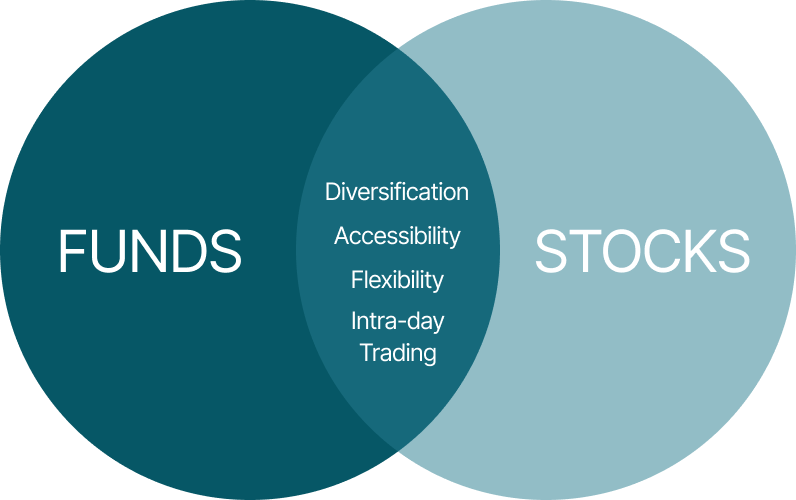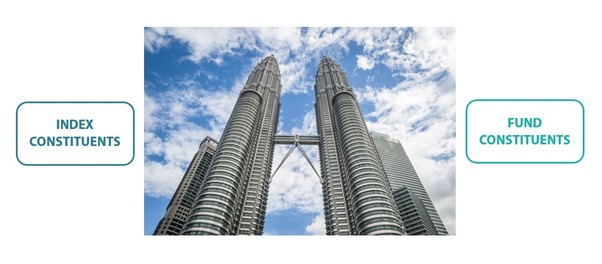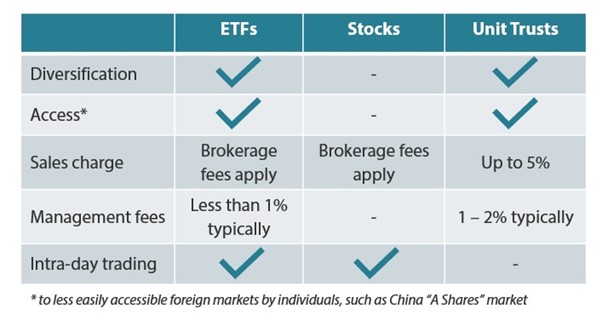The information on this website is not intended to be an offer, or a solicitation of an offer, to buy or sell any product or service to any person in any jurisdiction where such offer, solicitation, purchase or sale would be unlawful under the laws of such jurisdiction.
This website may contain links to the website of certain overseas affiliates of Nikko Asset Management Asia Limited (“Nikko AM Asia”). However, providing such links should not be considered as offering or solicitation by Nikko AM Asia of any product or service of its affiliates to any person.
This website is purely for informational purposes only with no consideration given to the specific investment objective, financial situation and particular needs of any specific person. It should not be relied upon as financial advice. The mention of individual securities, sectors, regions or countries within this website are for illustration purposes only and does not imply a recommendation to buy or sell. You should seek advice from a financial adviser before making any investment. In the event that you choose not to do so, you should consider whether the investment selected is suitable for you. Investments in funds are not deposits in, obligations of, or guaranteed or insured by Nikko AM Asia.
Past performance or any prediction, projection or forecast is not indicative of future performance. The Funds or any underlying funds may use or invest in financial derivative instruments. The value of units and income from them may fall or rise. Investments in the Funds are subject to investment risks, including the possible loss of principal amount invested. You should read the relevant prospectus (including the risk warnings) and product highlights sheet of the Funds, which are available and may be obtained from appointed distributors of Nikko AM Asia or our website (www.nikkoam.com.sg) before deciding whether to invest in the Funds.
The information contained herein may not be copied, reproduced or redistributed without the express consent of Nikko AM Asia. While reasonable care has been taken to ensure the accuracy of the information as at the date of publication, Nikko AM Asia does not give any warranty or representation, either express or implied, and expressly disclaims liability for any errors or omissions. Information may be subject to change without notice. Nikko AM Asia accepts no liability for any loss, indirect or consequential damages, arising from any use of or reliance on this website. This advertisement has not been reviewed by the Monetary Authority of Singapore.
Links To and From Other Websites
The hyperlinks within this website may take you to third party websites which are not within our control. We have not reviewed these websites and are not responsible for their availability, accuracy or content or for any loss or damage that may arise out of your use of them. Access to third party websites is entirely at your own risk. You should read any terms and conditions applying to the use of any third party website that you visit and address any complaints or queries relating to such websites to the operator of that website. The inclusion of a link in this website does not imply that we endorse, recommend or approve any material on the linked page or accessible from it.
You may not use any part of this website on any other website or link any other website to this website without prior written permission.
The information on this website is not intended to be an offer, or a solicitation of an offer, to buy or sell any product or service to any person in any jurisdiction where such offer, solicitation, purchase or sale would be unlawful under the laws of such jurisdiction.
This website may contain links to the website of certain overseas affiliates of Nikko Asset Management Asia Limited (“Nikko AM Asia”). However, providing such links should not be considered as offering or solicitation by Nikko AM Asia of any product or service of its affiliates to any person.
This website is purely for informational purposes only with no consideration given to the specific investment objective, financial situation and particular needs of any specific person. It should not be relied upon as financial advice. The mention of individual securities, sectors, regions or countries within this website are for illustration purposes only and does not imply a recommendation to buy or sell. You should seek advice from a financial adviser before making any investment. In the event that you choose not to do so, you should consider whether the investment selected is suitable for you. Investments in funds are not deposits in, obligations of, or guaranteed or insured by Nikko AM Asia.
Past performance or any prediction, projection or forecast is not indicative of future performance. The Funds or any underlying funds may use or invest in financial derivative instruments. The value of units and income from them may fall or rise. Investments in the Funds are subject to investment risks, including the possible loss of principal amount invested. You should read the relevant prospectus (including the risk warnings) and product highlights sheet of the Funds, which are available and may be obtained from appointed distributors of Nikko AM Asia or our website (www.nikkoam.com.sg) before deciding whether to invest in the Funds.
The information contained herein may not be copied, reproduced or redistributed without the express consent of Nikko AM Asia. While reasonable care has been taken to ensure the accuracy of the information as at the date of publication, Nikko AM Asia does not give any warranty or representation, either express or implied, and expressly disclaims liability for any errors or omissions. Information may be subject to change without notice. Nikko AM Asia accepts no liability for any loss, indirect or consequential damages, arising from any use of or reliance on this website. This advertisement has not been reviewed by the Monetary Authority of Singapore.
Links To and From Other Websites
The hyperlinks within this website may take you to third party websites which are not within our control. We have not reviewed these websites and are not responsible for their availability, accuracy or content or for any loss or damage that may arise out of your use of them. Access to third party websites is entirely at your own risk. You should read any terms and conditions applying to the use of any third party website that you visit and address any complaints or queries relating to such websites to the operator of that website. The inclusion of a link in this website does not imply that we endorse, recommend or approve any material on the linked page or accessible from it.
You may not use any part of this website on any other website or link any other website to this website without prior written permission.
The information on this website is not intended to be an offer, or a solicitation of an offer, to buy or sell any product or service to any person in any jurisdiction where such offer, solicitation, purchase or sale would be unlawful under the laws of such jurisdiction.
This website may contain links to the website of certain overseas affiliates of Nikko Asset Management Asia Limited (“Nikko AM Asia”). However, providing such links should not be considered as offering or solicitation by Nikko AM Asia of any product or service of its affiliates to any person.
This website is purely for informational purposes only with no consideration given to the specific investment objective, financial situation and particular needs of any specific person. It should not be relied upon as financial advice. The mention of individual securities, sectors, regions or countries within this website are for illustration purposes only and does not imply a recommendation to buy or sell. You should seek advice from a financial adviser before making any investment. In the event that you choose not to do so, you should consider whether the investment selected is suitable for you. Investments in funds are not deposits in, obligations of, or guaranteed or insured by Nikko AM Asia.
Past performance or any prediction, projection or forecast is not indicative of future performance. The Funds or any underlying funds may use or invest in financial derivative instruments. The value of units and income from them may fall or rise. Investments in the Funds are subject to investment risks, including the possible loss of principal amount invested. You should read the relevant prospectus (including the risk warnings) and product highlights sheet of the Funds, which are available and may be obtained from appointed distributors of Nikko AM Asia or our website (www.nikkoam.com.sg) before deciding whether to invest in the Funds.
The information contained herein may not be copied, reproduced or redistributed without the express consent of Nikko AM Asia. While reasonable care has been taken to ensure the accuracy of the information as at the date of publication, Nikko AM Asia does not give any warranty or representation, either express or implied, and expressly disclaims liability for any errors or omissions. Information may be subject to change without notice. Nikko AM Asia accepts no liability for any loss, indirect or consequential damages, arising from any use of or reliance on this website. This advertisement has not been reviewed by the Monetary Authority of Singapore.
Links To and From Other Websites
The hyperlinks within this website may take you to third party websites which are not within our control. We have not reviewed these websites and are not responsible for their availability, accuracy or content or for any loss or damage that may arise out of your use of them. Access to third party websites is entirely at your own risk. You should read any terms and conditions applying to the use of any third party website that you visit and address any complaints or queries relating to such websites to the operator of that website. The inclusion of a link in this website does not imply that we endorse, recommend or approve any material on the linked page or accessible from it.
You may not use any part of this website on any other website or link any other website to this website without prior written permission.
The information on this website is not intended to be an offer, or a solicitation of an offer, to buy or sell any product or service to any person in any jurisdiction where such offer, solicitation, purchase or sale would be unlawful under the laws of such jurisdiction.
This website may contain links to the website of certain overseas affiliates of Nikko Asset Management Asia Limited (“Nikko AM Asia”). However, providing such links should not be considered as offering or solicitation by Nikko AM Asia of any product or service of its affiliates to any person.
This website is purely for informational purposes only with no consideration given to the specific investment objective, financial situation and particular needs of any specific person. It should not be relied upon as financial advice. The mention of individual securities, sectors, regions or countries within this website are for illustration purposes only and does not imply a recommendation to buy or sell. You should seek advice from a financial adviser before making any investment. In the event that you choose not to do so, you should consider whether the investment selected is suitable for you. Investments in funds are not deposits in, obligations of, or guaranteed or insured by Nikko AM Asia.
Past performance or any prediction, projection or forecast is not indicative of future performance. The Funds or any underlying funds may use or invest in financial derivative instruments. The value of units and income from them may fall or rise. Investments in the Funds are subject to investment risks, including the possible loss of principal amount invested. You should read the relevant prospectus (including the risk warnings) and product highlights sheet of the Funds, which are available and may be obtained from appointed distributors of Nikko AM Asia or our website (www.nikkoam.com.sg) before deciding whether to invest in the Funds.
The information contained herein may not be copied, reproduced or redistributed without the express consent of Nikko AM Asia. While reasonable care has been taken to ensure the accuracy of the information as at the date of publication, Nikko AM Asia does not give any warranty or representation, either express or implied, and expressly disclaims liability for any errors or omissions. Information may be subject to change without notice. Nikko AM Asia accepts no liability for any loss, indirect or consequential damages, arising from any use of or reliance on this website. This advertisement has not been reviewed by the Monetary Authority of Singapore.
Links To and From Other Websites
The hyperlinks within this website may take you to third party websites which are not within our control. We have not reviewed these websites and are not responsible for their availability, accuracy or content or for any loss or damage that may arise out of your use of them. Access to third party websites is entirely at your own risk. You should read any terms and conditions applying to the use of any third party website that you visit and address any complaints or queries relating to such websites to the operator of that website. The inclusion of a link in this website does not imply that we endorse, recommend or approve any material on the linked page or accessible from it.
You may not use any part of this website on any other website or link any other website to this website without prior written permission.







